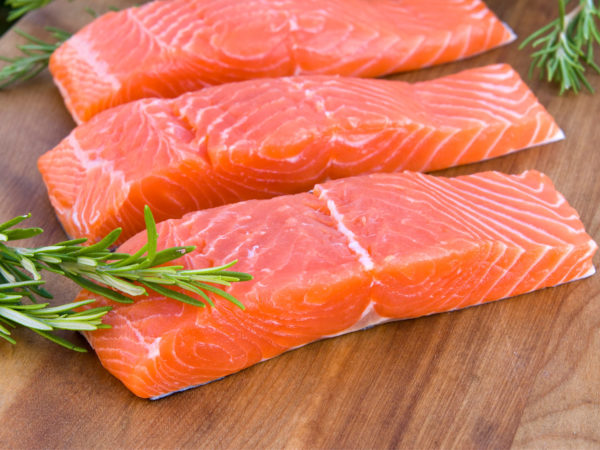Top 10 Strategies for Reducing Your Grocery Expenses Amid Rising Prices
In today's economic climate, the impact of inflation is keenly felt, particularly during your trips to the grocery store. Over the past year, grocery prices have surged by approximately 12%, with certain categories experiencing even steeper hikes.
This upward trend is particularly evident in the prices of essential foods such as eggs, beef, and milk. Even the savviest shoppers are feeling the strain as these price increases accumulate. To put it in perspective, a 12% rise means that if your typical grocery budget was $500, it now stretches to $560.
Despite these challenges, there are actionable ways to trim your grocery bill without compromising on nutritious meals. Explore these 10 effective strategies for curbing expenses while grappling with inflation's impact on prices.
1. Craft a Strategic Plan

Crafting a meticulous plan yields multiple monetary benefits. By creating a comprehensive grocery list, you can sidestep impulse purchases that contribute to a ballooning bill. This strategy also fosters more efficient utilization of purchased items and existing inventory, leading to significant cost reductions. Research indicates that households, on average, discard roughly 30% of their bought food. Embrace meal planning for the week, encompassing dinners, breakfasts, and lunches. This approach promotes increased home cooking, reducing the temptation of pricier takeout options during busy periods. A simple list of recipes, followed by targeted ingredient shopping, is a highly effective money-saving tactic.
2. Optimize Produce Selection
While promoting increased fruit and vegetable consumption, you can still harness savings through judicious choices. Favor frozen, canned, or dried produce as budget-friendly alternatives. These options deliver essential nutrients, such as vitamins, minerals, fiber, and antioxidants. Prioritize selections with minimal added sugars and salt. Substituting costlier produce with more affordable options further maximizes savings. Transform cabbage into a slaw instead of a pricier mixed green salad. Utilize onions instead of shallots and frozen berries instead of fresh ones. Remember to prioritize delicate produce before opting for sturdier alternatives, effectively minimizing waste.
3. Hunt for Bargains

Embrace sales hunting by leveraging coupons and weekly sale flyers. Even if you're a newcomer to these tactics, there's no better time to start. Many grocery outlets offer discounts across various product categories. By combining these markdowns with coupons, substantial savings are attainable. For online shoppers, consider incorporating virtual coupons into your delivery or pickup orders. Enroll in rewards programs offered by your frequented grocery stores to unlock additional benefits. Develop a strategy of initially exploring on-sale items, then weaving them into your meal plans. Simultaneously, be on the lookout for coupons relevant to your usual purchases.
4. Decode Unit Prices
Familiarize yourself with unit prices, prominently displayed alongside item prices on store shelves. This facet empowers accurate comparisons between different sizes and brands. For instance, if cereal is a regular purchase, investing in a larger box—despite the higher initial cost—can translate to a lower per-pound expense. Unit prices also facilitate brand evaluation, especially for products packaged in various sizes. Harness this information to optimize selections aligning with your budget constraints.
5. Revamp Protein Choices

Protein-rich options like meat, poultry, and seafood tend to dominate grocery costs. Nonetheless, prudent strategies can yield substantial savings without sacrificing meat consumption. Furthermore, consider exploring plant-based protein alternatives like beans and tofu, often more cost-effective than their animal counterparts. Opt for budget-conscious cuts such as ground meats, top round steaks, or chicken thighs instead of pricier alternatives. Exploit sale periods to stockpile protein items, subsequently freezing them for future use. Maximizing proteins can entail blending them with grains and vegetables in dishes like stir-fries, burgers, and casseroles.
6. Demystify Expiry Dates
Understanding the nuances of expiry dates is crucial. While some foods do spoil, many date labels primarily indicate quality standards rather than safety. With the exception of infant formula, which carries a safety date, "best if used by," "sell-by," "use-by," or "freeze-by" dates signify freshness and quality, as per the USDA. Discerning these distinctions empowers you to prioritize fresher options, thereby reducing waste and economizing expenditures.
7. Exploit Your Pantry and Freezer

Discover the potential of your pantry and freezer before embarking on a shopping spree. Often, overlooked ingredients can form the foundation of meals, reducing the need for additional purchases. Despite the extra effort required, leveraging existing supplies can effectively lower costs. This practice not only stretches your budget but also ensures perishable items are consumed before their expiration dates.
8. Capitalize on Bulk Purchases
Bulk buying, when executed judiciously, offers substantial value. Stores like Costco, Sam's Club, and BJ's are renowned for offering enticing deals on groceries. While particularly advantageous for larger families, buying staple items in bulk can generate significant savings for all consumers. If space constraints or membership requirements preclude warehouse store access, consider purchasing larger sizes from your regular grocery store, taking care to compare unit prices.
9. Explore Different Stores

Deviate from store loyalty to capitalize on fluctuating prices. Depending on ongoing sales, diversifying your shopping venues can unlock attractive cost reductions. Esteemed outlets like ALDI and Trader Joe's are recognized for delivering budget-friendly options. Even dollar stores can serve as unexpected sources of economical staples. If feasible, explore alternative shopping destinations to access potential savings.
10. Evaluate Convenience Purchases
While convenience often commands a premium, prudent choices can yield substantial savings. Carefully weigh the value of convenience against the cost. Pre-cut produce and pre-made sauces provide convenience but might also translate to home-cooked meals, reducing reliance on takeout. Consider these purchases within the broader context of your budget. Additionally, explore frozen vegetable options, which can offer convenience without inflated expenses.
Amid rising prices, adopting these strategies can mitigate the impact on your grocery bill. By implementing practical approaches to planning, selecting, and purchasing, you can navigate inflation-induced challenges without compromising the quality of your meals or your budget.






